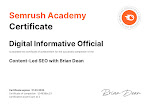What is PU Leather?
What is PU Leather?
When you think of leather, you probably imagine something luxurious and timeless. But what if I told you there's a material that mimics leather without the hefty price tag and ethical concerns?
Enter PU leather, a popular alternative that’s making waves in various industries. So, what exactly is PU leather, and why is it gaining so much traction? Let's dive in and find out!
What Does PU Stand For?
PU stands for polyurethane, a versatile polymer used in various applications, including coatings, adhesives, and foams.
When it comes to PU leather, polyurethane is applied to a fabric base to create a material that looks and feels like genuine leather.
The Manufacturing Process
Creating PU leather involves several steps. It starts with a base material, often polyester or cotton. This fabric is coated with a layer of polyurethane, which is then embossed to give it the texture of leather. The final product is a sleek, leather-like material that’s both affordable and versatile.
How is PU Leather Made?
The Base Material
The base material for PU leather is typically a fabric, such as polyester or cotton, which provides strength and flexibility.
Coating Process
This fabric base is coated with liquid polyurethane. The polyurethane is allowed to dry and solidify, creating a durable surface.
Final Touches
Once the polyurethane layer is set, the material is embossed with a leather-like texture. This step is crucial for giving PU leather its realistic appearance.
Types of PU Leather
Standard PU Leather
This is the most common type of PU leather, used in everything from clothing to furniture.
Bi-cast Leather
A type of PU leather that involves a split leather backing with a polyurethane coating on top. It’s often used in furniture.
Eco-Friendly Variants
Some manufacturers are now producing PU leather using bio-based polyurethane, making it a more sustainable option.
PU Leather vs Genuine Leather
Differences in Composition
Genuine leather is made from animal hides, while PU leather is made from synthetic materials.
Differences in Appearance and Texture
PU leather can be made to closely mimic genuine leather, but often it lacks the natural variations found in real leather.
Durability Comparison
While PU leather is durable, it doesn’t age as well as genuine leather, which develops a patina over time.
Advantages of PU Leather
Cost-Effectiveness
PU leather is significantly cheaper than genuine leather, making it accessible for a broader audience.
Ethical Considerations
Since it doesn’t involve animal hides, PU leather is a cruelty-free alternative, appealing to vegans and those concerned with animal welfare.
Versatility in Design
Available in a wide range of colors and finishes, PU leather is highly versatile for various design needs.
Disadvantages of PU Leather
Longevity and Durability
PU leather may crack and peel over time, especially with heavy use.
Environmental Impact
The production of polyurethane involves chemicals that can be harmful to the environment.
Maintenance Issues
PU leather requires careful maintenance to avoid damage and extend its lifespan.
Common Uses of PU Leather
Fashion Industry
From jackets to shoes, PU leather is a staple in the fashion industry due to its affordability and versatility.
Furniture and Upholstery
PU leather is commonly used in sofas, chairs, and other furniture items, offering a sleek look at a fraction of the cost of genuine leather.
Automotive Interiors
Many car manufacturers use PU leather for seats and interiors, providing a luxurious feel without the luxury price.
Caring for PU Leather
Cleaning Tips
To clean PU leather, use a damp cloth and mild soap. Avoid harsh chemicals that can damage the material.
Storage Recommendations
Store PU leather items in a cool, dry place away from direct sunlight to prevent cracking and fading.
Avoiding Common Pitfalls
Avoid using abrasive materials for cleaning and be gentle when handling PU leather to avoid


.png)



















Post a Comment